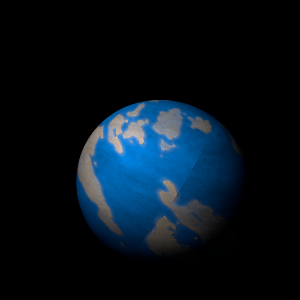|
|
Space Astro
|
Info for exoplanet "Behyo Ige"
| Scientific (actual) data |
|---|
| Name | Kepler-1366 b |
| Planet status | Confirmed |
| Radius | 0.128 |
| Orbital period | 2.16457 |
| Discovered | 2016 |
| Updated | 2021-02-05 |
| Tconj | 2454960 |
| Publication | Announced on a website |
| Detection type | Primary Transit |
| Alternate names | 2MASS J19001557+4133175 b, K02839.01, KIC 6186964 b, KOI-2839 b, KOI-2839.01 |
| Star name | Kepler-1366 |
| Right ascension | 285.07° |
| Declination | 41.55° |
| Mag j | 13.772 |
| Mag h | 13.099 |
| Mag k | 12.961 |
| Star distance | 395 |
| Star metallicity | -0.02 |
| Star mass | 0.62 |
| Star radius | 0.6 |
| Star age | 3.98 |
| Star temperature | 4070 |
| Star alternate names | 2MASS J19001557+4133175, KIC 6186964, KOI-2839 |
| Wikipedia article | Kepler-1366 b |
Back
| |
| Fictional info (?) |
|---|
| Suggested name | Behyo Ige |
| Planet type | Cold planet |
| As seen from Kepler-1366, in a frame of reference that rotates with the orbital motion, it appears to rotate only once every two years.
The sinister surface is inhabitated by unreliable yet poisonous carnivores known to survive in the air by consuming a substance called "Pyapuda-ge". Most Nyasa'shurya are similar to the Gapyupyu but have 5 eyes and vary in length from 70 to 80 cm. They are known to withstand temperatures from 90 to 140°C and prolonged periods without food. |
| Estimated population | 2200000000 |
| Atmosphere | Carbon dioxide | 92% |
| Oxygen | 7.4% |
| Methane | 0.33% |
| Water | 0.0031% |
| Atmospheric pressure | 0.3 bar |
 |
| No known satellites |
| Google search for Behyo ige |
|
Website by Joachim Michaelis
|
|
|
|